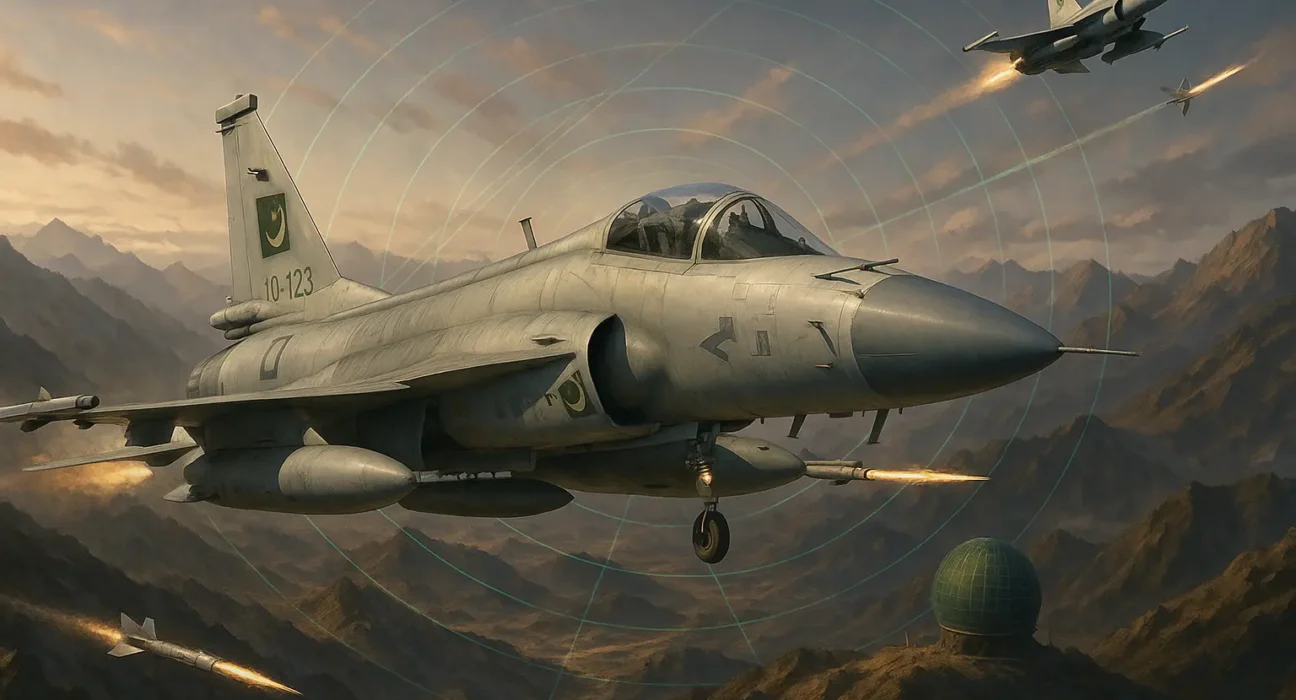How China Helped Pakistan Shoot Down Indian Fighter Jets: A New Era in South Asian Air Power

During May 2025, a significant change of balance in the air power over South Asia took place. In a high-tension confrontation at the Pakistan-India border, Pakistan repelled a big, aerial Indian army. But the basis of this operation was not just the preparedness of Pakistan-but the covert but the strategic Chinese support that made all the difference.
Although there was no de jure deployment of Chinese forces, intelligence, technology and real time support brought to Pakistan an advantage that left regional observers and military experts, stunned.
India’s Aerial Maneuver and Strategic Intent
The confrontation started with more than 170 IAF’s jet fighters out maneuvered in western front among which there were Rafales and Sukhois, Mirage 2000s. Indian sources said that this was a show of force meant to be a deterrent and dominance. However, analysts described it as a try to emulate the previous Balakot style attack – penetrating Pakistani airspace far in search of a prefetch, albeit visible, strike.
India was expecting a response, but surely not to the degree of readiness and precision of what Pakistan demonstrated this time.
Pakistan’s Advanced Response: Ready and Coordinated
Whereas during the previous years, Pakistan Air Force (PAF) had lacked coordination, was slow and lacked tactical sophistication, it was fully coordinated, swift, and tactarily sophisticated this time. The deployment of the J 10C was very instrumental. These jets firing PL-15 long range air to air missiles neutralized India’s air play on a strategic depth and high precision strike basis.
But without hardware, what really turned the tide was hardware alone. It was China’ s invisible help- a flawlessly integrated system of satellite intelligence, radar tracking encrypted communications, and missile guidance that kept Pakistan one step ahead.
Chinese Support Behind the Scenes
With no formal statement, but reports by defense analysts and leaked intercepts, it was validated that China had digital and intelligence presence in the standoff. This included:
• Imaging in real-time that will indicate Indian air movement
• High frequency radar feed described with Pakistan air defense units.
• Locking of missiles and support of electronic counter measure.
• Protected data flow in digital means of communication between forward command units and aircraft.
Even though not seen on the ground, Chinese military advisors apparently had a part to play during pre-event simulation training to allow PAF pilots to react quicker and more accurately.
The Rafale Shock: India’s High-Tech Jets Countered
One of the highlight of the confrontation was when one Rafale fighter jet was reportedly shot down, several others had to retreat. These French made jets were all comers, all killers, India’s game changers, as they promised advanced avionics and stealth capabilities.
But against the background of Chinese-aided real-time targeting systems, even these jets could not avoid detection. The Rafales, flying without full back-up of satellite or AWACS were unable to spot the high speed missile locks from the J-10Cs of Pakistan.
“This wasn’t just flying jets; this was about control of information, control of timing, control of integration,” defense analyst Faraz Haider said.
Digital Warfare and Silent Partnerships
What this incident exposed was a transition of air warfare from traditional to network-centric digital warfare. China, without even launching a single jet, helped the Pakistanis bring into being a potent anti-air umbrella which thwarted India’s first-mover advantage.
These silent military partnerships (training, surveillance, and tech integration) are fast becoming the new normal in strategic partnerships. Beijing’s power over the military equations of South Asia can now be increased beyond arms sales.
Regional Implications and Air Strategy Reassessment
India is now reviewing its aerial doctrine especially as it over- relies on expensive platforms, but lacks the supporting digital warfare structures. Experts are urging more integration of AWACS, Satellite coverage and data sharing system among India’s air defence networks.
Meantime, Pakistan is only likely to further intensify military- military relations with China augmenting further in cyber defense areas, drone combat operations and artificial intelligence based combat platforms.
Rising Concerns in International Circles
World powers, in particular, the United States and Russia are paying attention to the consequences of whichever they may turn out to be. The mobilization of Chinese military intelligence in near combat terms questions the future flashpoints, proxy support and strategic ambiguity in disputed territories.
Such an event could also make the other regional players (Iran and Turkey) to engage in the same kind of digital defense partnerships.
Lessons for Modern Air Combat
This clash demonstrated that air superiority is not about aircraft anymore. The real power lies in:
• Diagnosis system between air and ground units fusion
• prediction threat modeling and AI aided combat assistance.
• Real-time communication in encrypted environments
• Long-range missile superiority
Air war was not fought over the skies—not in command centers, control rooms, data centers, because it was all about cross-border agreement on digital cooperation.
Final Thoughts: A New Military Reality in South Asia
China’s strategic support allowed Pakistan to shoot down Indian fighter jets while itself not shooting a single missile. This result will have consequences not only for defense in South Asia, but also for relative responsibilities concerning expedient alliances for technology and matters of deployment.
For India, the task now is modernizing the network capabilities, integrate its forces better, and getting ready for the future, where the production of the invisible warfere will outweigh the production of the visible one.
The dust settles and the reality is clear that: the skies even above South Asia are no longer controlled by power, but precision, partnership, and the digital era.









